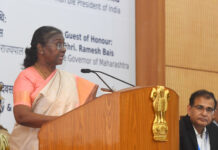
Invest in Non-communicable diseases (NCD), save money, says WHO
Ahead of the World Health Assembly in Geneva next week, the World Health Organisation has said that Investments in noncommunicable disease control generates major financial and health gains.
A new WHO report shows that investment in control of NCDs will generate US$350 billion through averted health costs and increased productivity and save 8.2 million lives by 2030 in world’s poorest countries.
The additional cost incurred for such investments is merely US$ 1.27 per person per year in low- and lower-middle-income countries (LLMICs). This would result in 8.2 million lives being saved during the same period.
NCDs kill 41 million people each year, comprising 72% of all deaths globally. The number of deaths from NCDs is increasing across the world, including in LLMICs. NCDs are chronic conditions requiring lengthy and expensive treatment especially in low-resource settings which drains household resources and forces families into poverty and hampers development.
The states with the largest dominance of non-communicable diseases are Kerala, Goa, and Tamil Nadu
The states with the largest dominance of non-communicable diseases are Kerala, Goa, and Tamil Nadu













